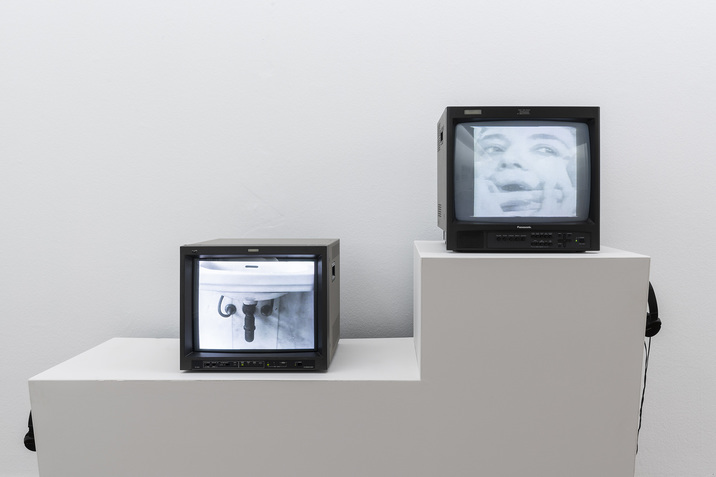-
From Current Issue
-
- Editor’s Letter Fire in the Heart
- Reviews I Gusti Ayu Kadek Murniasih
- Reviews 11th Seoul Mediacity Biennale: “One Escape at a Time”
- Dispatch Networked China
- One on One Monira Al Qadiri on Yukio Mishima
- Essays The rise of independent art spaces in pandemic-era Shanghai
- Features Tuan Andrew Nguyen
- Table of Contents
- Web Exclusives
- Archive
- Subscribe

R
E
V N
E
X
T
Installation view of WAEL SHAWKY’s Cabaret Crusades: Wall #5, 2019, mixed media, dimensions variable, at “Gohyang: Home,” Seoul Museum of Art, 2019–20. Courtesy Seoul Museum of Art.
To speak of the plurality of artistic modernisms beyond the Euro-American canon seems almost trite at present. Whether institutions in Europe and the United States are successfully diversifying their programming through tapping into previously underexplored regions is up for debate—yet, the piercing critique of postcolonialist discourse impelled that we destabilize the implicit structures of power that established the canon. But what about the institutions that are situated outside of the West, which has for the most part firmly perpetuated the insular narratives inherited from its lineage? Perhaps because non-Western institutions have already experienced the perils of marginalizing canons, much of their work has focused on resuscitating historical threads that have fallen into oblivion within their respective nations, relieved of the pressure to look beyond itself against the West. The limiting worldview that results from such uneven sense of scholarly responsibility was precisely the focus of “Gohyang: Home,” organized by the Seoul Museum of Art (SeMA), for it attempted to examine modern and contemporary Middle Eastern art from the perspective of East Asia.
As the third iteration of a series engaging with the “non-West” following exhibitions on Africa and Latin America, “Gohyang” consisted of a sprawling presentation of predominantly lens-based practices, along with large-scale installations by Adel Abidin, Mounira Al Solh, and Khadim Ali. It introduced promising sociohistorical connections between South Korea and the Middle East as its point of departure: thousands of South Korean laborers were dispatched as the continent started constructing its key infrastructures in the 1970s, and in 2018 the nation saw the arrival of more than 500 Yemeni refugees fleeing the ongoing civil war in their home country. Yet few of the works in the exhibition explored these concrete associations; among the scant examples was Che Onejoon’s display of found vernacular photographs that were taken by Koreans living in the Middle East in the 1980s and the 1990s. The absence of works that explore such rich historical context was particularly wanting, as they could have served as a resounding statement on the frightening hatred and discrimination that nationals from the broader Arab world experience in South Korea. Such projects could have demonstrated that the Middle East has consistently loomed large in the nation’s postwar history, and that the haunting Islamophobia today is predominantly a Western construct that is rooted in the rhetoric against the “war on terror.”
What complicated the lack of focused examination of the relationship between South Korea and the Middle East evoked within artistic production was the curatorial attempt at supplying an overview of modern and contemporary art from the region. This was perhaps best evidenced by the inclusion of Mona Hatoum’s video on censorship and male violence, So Much I Want to Say (1983), and Wael Shawky’s ongoing film cycle on Holy Wars, Cabaret Crusades (2010– )—almost canonical works that have been extensively feted at institutional exhibitions, particularly in the West. Uncomfortably situated between the riddles of establishing a thematic connection to Korea and meaningfully surveying the Middle East’s artistic landscape, “Gohyang” prompted whether a non-Western institution could posit an entirely unique point of view to approach the art of another non-Western geographic bloc, as opposed to merely importing established (and perhaps unchallenged) premises and perspectives adopted by Euro-American museums. Minha Park’s standout video Discourse on Twin Mirrors (2014–19) encapsulated this dilemma by juxtaposing Baghdad against the US military training site Medina Wasl located in the Mojave Desert, designed as an exact replica of Iraqi urban environments. At no point does the video installation provide any clues on the nationality of the artist; the Korean subtitles could easily have been inserted at SeMA’s request for the local audience. Discourse therefore identifies the ways in which the American logic of warfare has infiltrated the understanding of the Middle East beyond the US, unsettlingly becoming a metaphor for the difficulties of South Korea offering an alternative perspective that departs from that of its Western allies. The pitfalls of American hegemony, after all, are not solely contained in the domain of politics, but seep into the realm of artistic imagination.
“Gohyang: Home” is on view at the Seoul Museum of Art until March 8, 2020.
To read more of ArtAsiaPacific’s articles, visit our Digital Library.



















